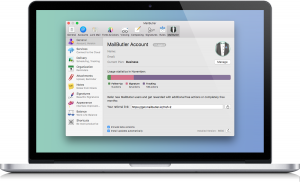

Subsequently, study staff requested medical clearance from the participant’s primary care provider. Interested individuals underwent a telephone screen and, if potentially eligible, attended an in-person interview (Baseline 1) where they provided written informed consent, completed interviews to determine eligibility, and completed other assessments. Advertisements presented study interventions with equipoise, using the rationale that both yoga and HLW were designed to promote good physical and mental health. Participants were not required to be receiving any other psychiatric treatment at the hospital, and most were not. We recruited participants from the greater Providence area from July 2011–June 2014, and some participants were active in the study until March 2015.

All study activities occurred at the hospital, which is a psychiatric hospital in Providence, RI. The Institutional Review Board of Butler Hospital approved the study. A priori, the 10-week QIDS assessment was designated as the primary outcome. We hypothesized that yoga participants would show lower depression severity over time as assessed by the Quick Inventory of Depression Symptomatology – Clinician Rating (QIDS) ( Rush et al., 2003), as well as better social and role functioning, better general health perceptions and physical functioning, and less physical pain relative to the control group. The intervention phase lasted 10 weeks participants were then followed for 6 months afterwards. We encouraged all participants to continue to take their antidepressant medications. an attention control group (i.e., a health education class entitled Health Living Workshop HLW). We randomized participants to participate in yoga classes vs.
We enrolled individuals with current or recent major depression who were receiving antidepressant medication and continued to have elevated depressive symptoms. The purpose of this study is to examine whether hatha yoga is efficacious for depression when used as an adjunct to antidepressant treatment. However, studies of yoga for depression have numerous methodologic limitations, including small sample sizes, lack of assessment of instructor fidelity to the yoga protocol, lack of outcome assessment by blind raters, lack of intent-to-treat analyses, and insufficient documentation of randomization procedures ( Uebelacker et al., 2016). Yoga may also improve physical health outcomes comorbid with depression, particularly pain. Exercise has been demonstrated helpful for depression as well ( Cooney et al., 2013).Ī recent meta-analysis of 12 randomized controlled trials (RCTs) of yoga for clinical depression reported yoga was significantly better than usual care, relaxation exercises, or aerobic exercise in decreasing depressive symptoms ( Cramer et al., 2013). Increased mindfulness may improve depression by reducing rumination, increasing self-compassion, or promoting the view that thoughts and feelings are transitory cognitive contents rather than self-defining (i.e., meta-cognitive awareness) ( van der Velden et al., 2015). Hatha yoga can combine mindfulness practice (i.e., non-judgmental attention to present-moment experience) and physical activity in a way that is internally consistent. Hatha yoga includes breath control ( pranayama), physical postures ( asanas), and meditation ( dhyana). Most practice hatha yoga, which involves training the body with the ultimate goal of promoting good physical and mental health. adults practice yoga ( Barnes et al., 2004). Yoga is an ancient Indian system of philosophy and practice ( Iyengar, 1993). Thus, there is a need to test innovative adjunctive interventions to further improve outcomes in this group of patients who do not fully respond to traditional treatments. Similarly, in the Sequenced Treatment Alternatives to Relieve Depression trial, the remission rate after initial antidepressant treatment was 37%, and the cumulative remission rate with up to four successive treatment steps was 67% ( Rush et al., 2006). For example, in a large, naturalistic study of depression treatment in which 77% of participants received “adequate” or “aggressive” pharmacotherapy, 46% of participants were classified as non-responders after 6 months, and 32% were considered to have responded but not remitted ( Corey-Lisle et al., 2004). However, partial and non-response to existing treatments, such as antidepressant medications, remains a significant problem. The goal of depression treatment is to help individuals achieve symptomatic remission and normal functioning.


 0 kommentar(er)
0 kommentar(er)
